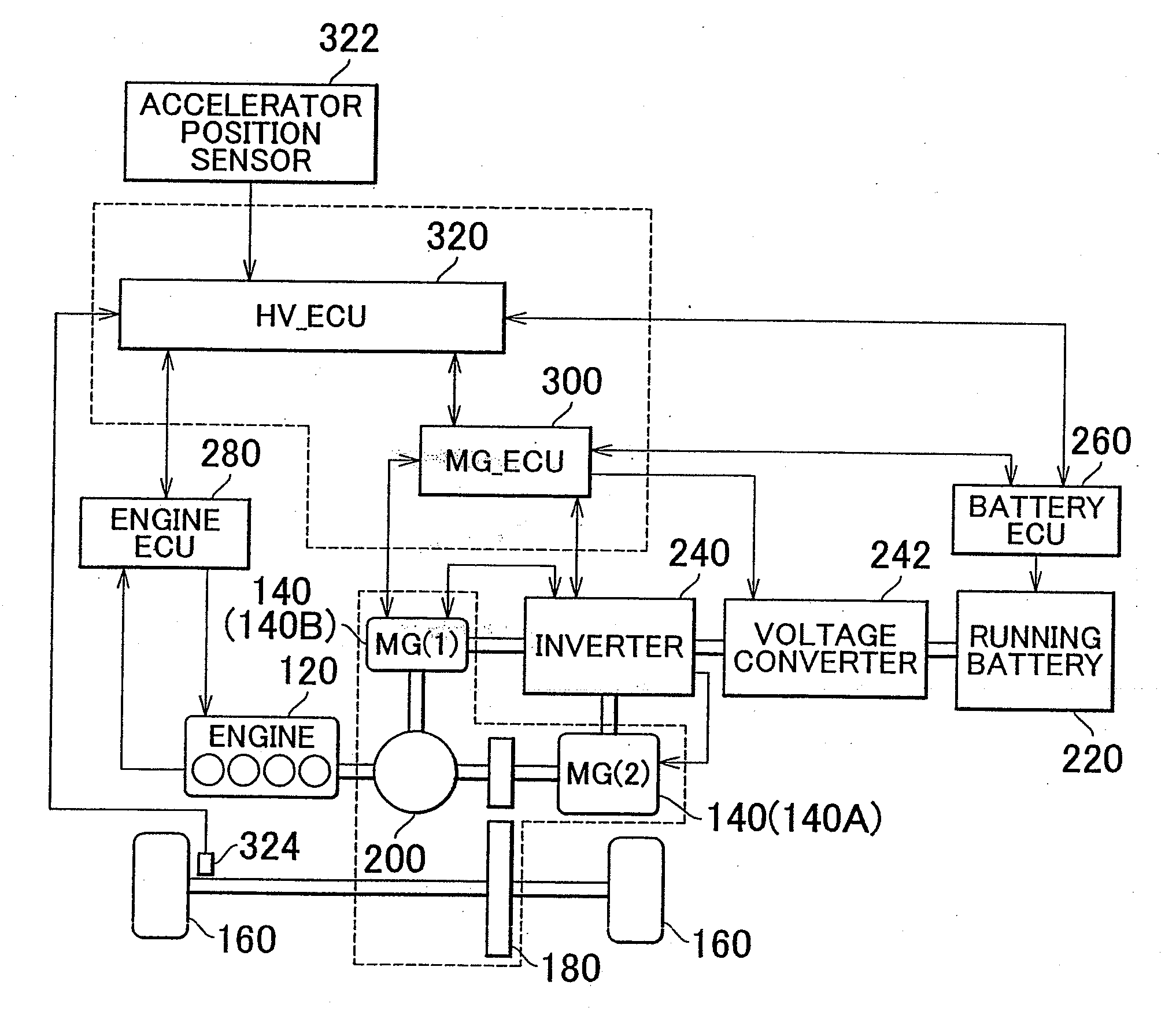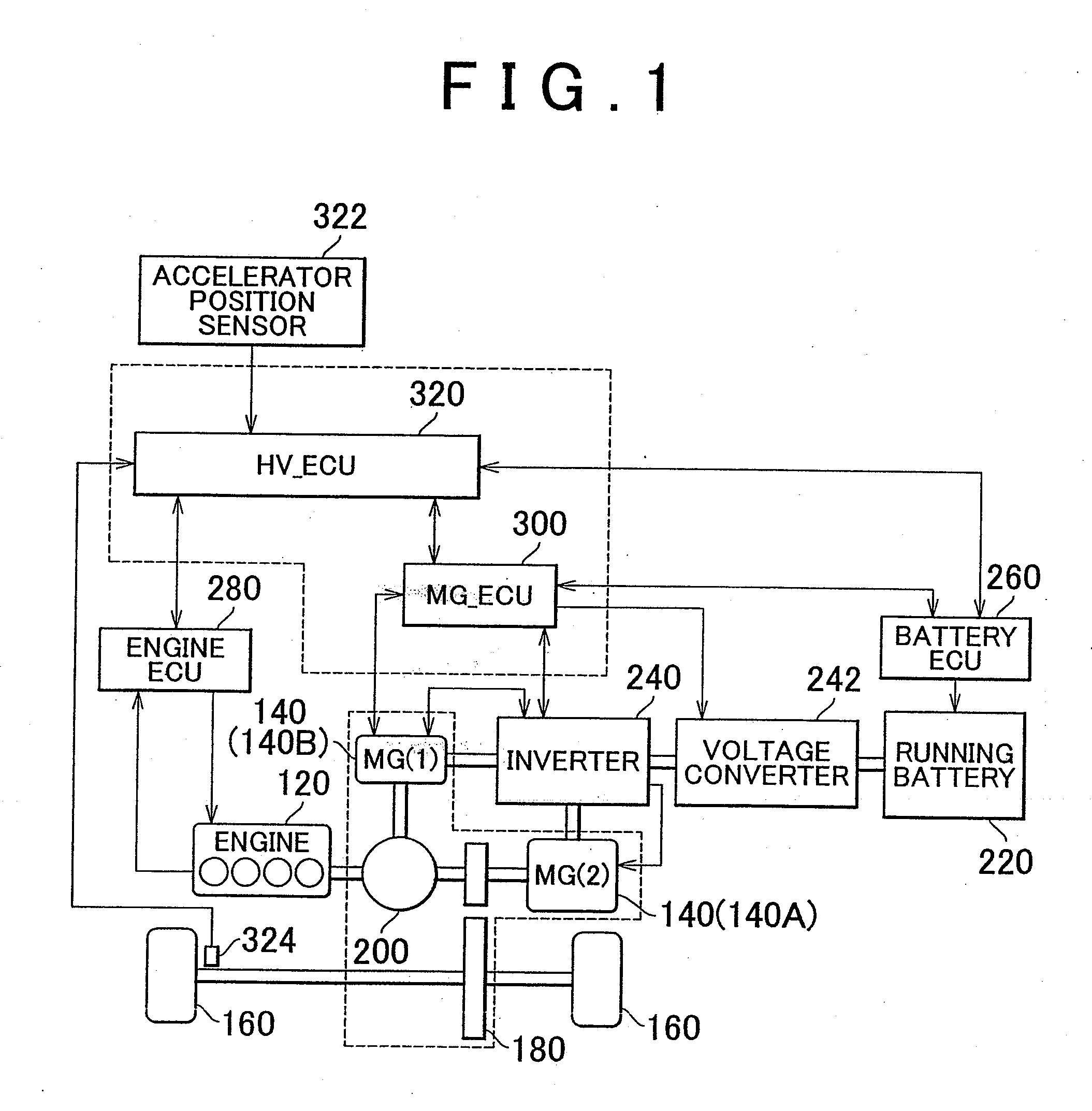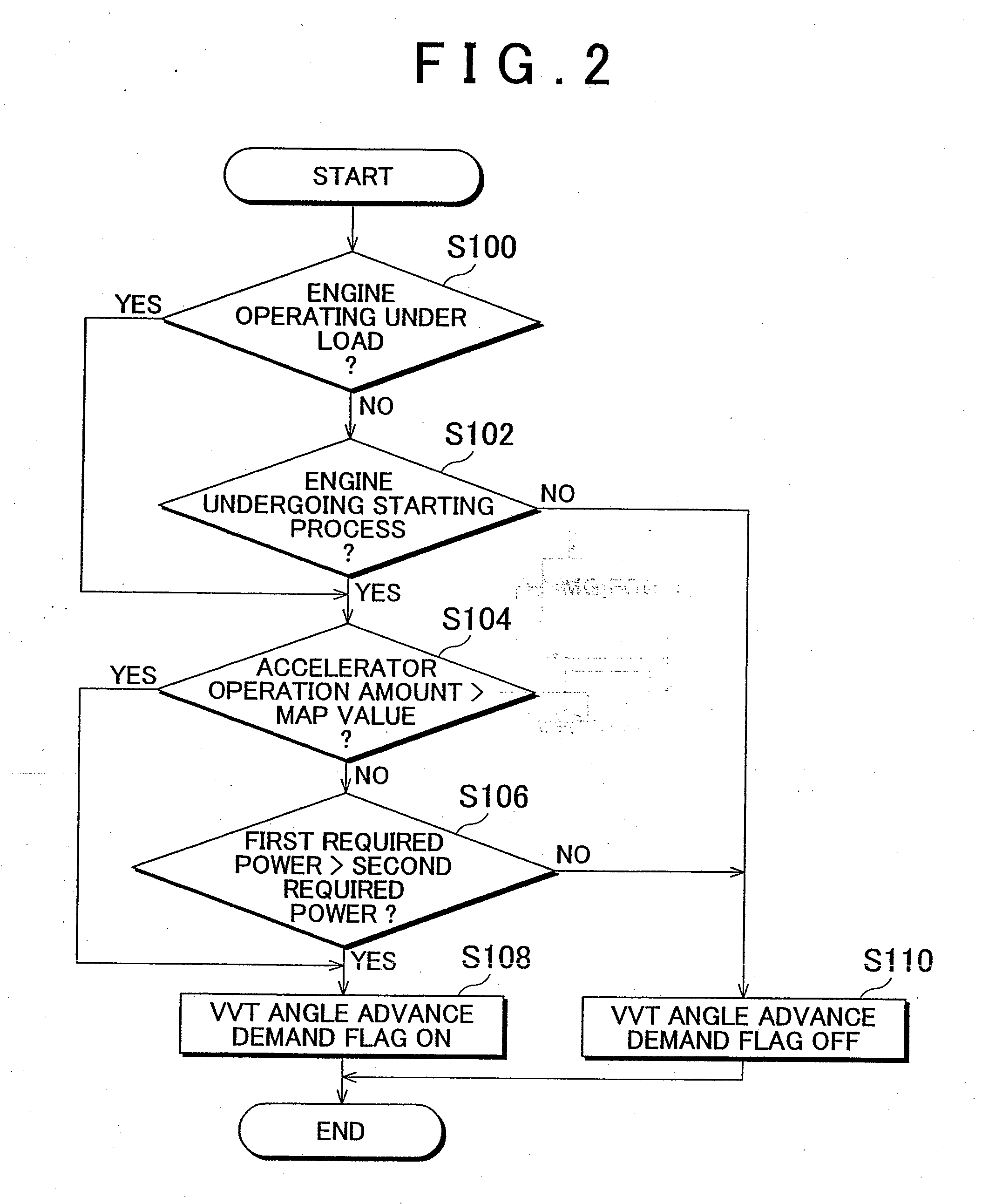[0008]The present invention has been conceived in order to solve the problem described above, and provides a control device for a vehicle, that reduces the shock that is created when an internal combustion engine starts.
[0010]According to the first aspect of the invention, when the internal combustion engine starts, the change means changes the
ignition timing of the internal combustion engine according to the information related to the movement of the vehicle which has been detected (for example, the vehicle speed). If, for example, the
ignition timing is retarded, the vehicle speed decreases, then, because the ignition timing is retarded when the vehicle is moving at
low speed, accordingly an abrupt in torque output is suppressed. After the engine has started,
normal control of the ignition timing of the engine may resumes. Due to this, it is possible to reduce the shock that is imparted to the vehicle when the internal combustion engine is being started. Furthermore, if the angle of the ignition timing is advanced when the vehicle is moving at high speed, then it is possible to enhance the output of the internal combustion engine while enhancing the acceleration responsiveness. Accordingly, it is possible to provide a control device for a vehicle that reduces shock when the internal combustion engine starts.
[0011]In the control device for a vehicle according to a second aspect of the invention, in addition to the structure of the first aspect of the invention, the detection means includes a vehicle speed sensor. Moreover, a means for retarding the ignition timing, included in the change means, increases the amount by which the ignition timing is retarded the lower the vehicle speed that is detected by the vehicle speed sensor.
[0012]According to the second aspect, the lower the detected vehicle speed is, the more the change means retards the ignition timing. Thus, because the ignition timing is retarded when the vehicle is moving at
low speed, abrupt increases in torque output are suppressed. As a result, it is possible to reduce the shock that is imparted to the vehicle when the internal combustion engine starts. Moreover, because the angle of the ignition timing is advanced, it is possible to enhance the output of the internal combustion engine while enhancing its acceleration responsiveness.
[0014]According to the third aspect of the invention, the change means compares a first required power, which is demanded for the vehicle based upon the detected level of demand (for example, the accelerator operation amount) and the detected information (for example, the speed of the vehicle), with a second required power, which is demanded from the internal combustion engine based upon the detected information, and changes the ignition timing based upon the result of that comparison. For example, the ignition timing is retarded when the first required power is smaller than the second required power, then the internal combustion engine is controlled so that the ignition timing is retarded when the vehicle is moving at a
low speed where the first required power becomes smaller than the second required power. Due to this, abrupt increases in the torque output are suppressed. For this reason, it is possible to reduce the shock that is imparted to the vehicle when the internal combustion engine is being started. Moreover, when the vehicle is moving at a high speed, where the first required power becomes greater than the second required power, the internal combustion engine is controlled so that the ignition timing is advanced when the vehicle is moving at a low speed. Due to this, it is possible to enhance the output of the internal combustion engine while ensuring the desired acceleration responsiveness for the driver.
[0016]According to the fourth aspect, the change means retards the ignition timing when the first required power is less than or equal to the second required power and the detected accelerator operation amount is than or equal to a threshold value that is established in accordance with the detected information (for example, the speed of the vehicle). By doing this, when the vehicle is moving at a low speed, where the first required power is less than or equal to the second required power, the internal combustion engine is controlled so that its ignition timing is retarded. Due to this, abrupt increases in torqueoutput are suppressed. Because of this, it is possible to reduce the shock imparted to the vehicle during starting of the internal combustion engine. Furthermore, when the vehicle is moving at a high speed where the first required power becomes greater than the second required power, the internal combustion engine is controlled so that the ignition timing is advanced. Due to this, it is possible to enhance the output of the internal combustion engine while ensuring the desired acceleration responsiveness for the driver.
 Login to View More
Login to View More  Login to View More
Login to View More 


